17 Home Remedies To Stop Postnasal Drip
Avoid the discomfort associated with mucus accumulation with these easy home remedies.
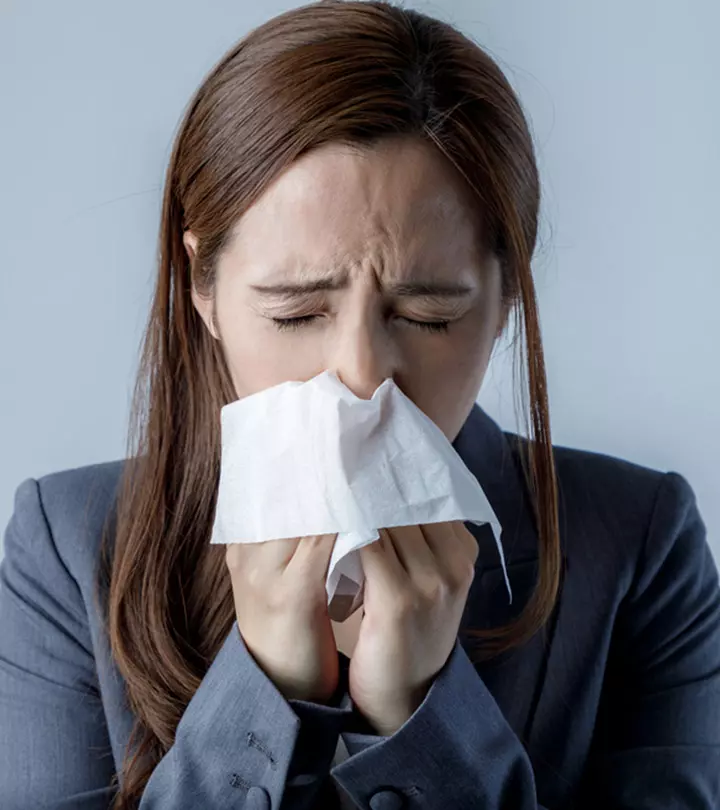
Image: ShutterStock
Postnasal drip, also known as upper airway cough syndrome, is caused by excessive mucus production by the nasal mucosa. As alarming as it may sound, this condition is widespread and can be tackled with simple home remedies to stop postnasal drip.
But why does it happen? In most cases, mucus in the body aids in the fight against sickness and eliminates inhaled particles. When more mucus is produced than is needed, it tends to gather in the nasal passage and flow back. In that case, you may accidentally swallow the mucus without even realizing it. This swallowing of mucus spontaneously is referred to as postnasal drip syndrome.
It is not the same as a runny nose where excessive mucus drains out externally. Postnasal drip is a condition where the mucus starts flowing back down the throat.
Continue reading to learn more about the causes, symptoms, and natural ways to treat postnasal drip.
Note: While the majority of the remedies in this article are not dangerous or harmful, their efficacy needs to be established through research. If the problem persists after two weeks despite utilizing these treatments, see your doctor right away.
In a survey conducted on 2,724 patients from European countries, it was found that 71 % of patients have discomfort when they have a cold. It was noted that 19.3% use self care practices for a runny nose and cold and 62% use a combination of pharmacological and non-pharmacological products for cold.
Particular medical ailments or medications can frequently cause postnasal drip syndrome. The possible reasons behind postnasal drip are stated below.
In This Article
Causes Of Postnasal Drip
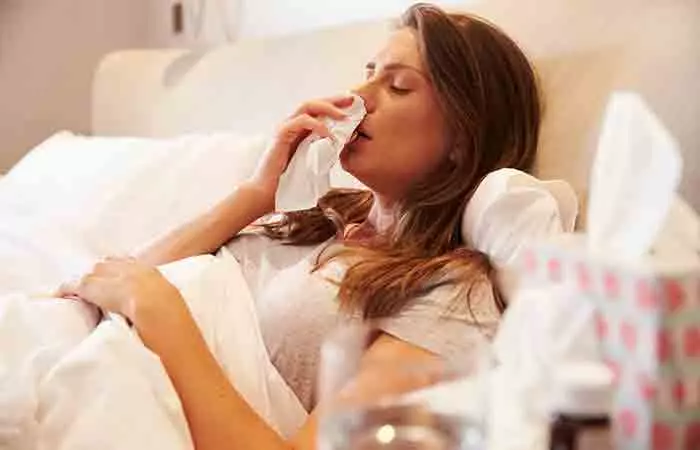
- A cold temperature
- Infections that cause cold and flu
- Chronic sinusitis
- Allergies
- Climate changes
- Medications such as birth control pills and drugs for blood pressure
- Fumes from perfumes, chemicals, or smoke
- Pregnancy
- A deviated septum or a crooked nose bone
- Spicy foods
The following are the signs and symptoms that are most commonly associated with postnasal drip.
Key Takeaways
- Cold temperature, flu, sinus infection, and allergies are certain common reasons for postnasal drip.
- Consuming apple cider vinegar daily mixed in a glass of water may help treat postnasal drip.
- Inhaling peppermint oil steam is also a powerful home remedy for the condition.
- Ginger tea acts as a decongestant and may help soothe nasal congestion.
- Using a humidifier may prevent postnasal drip.
Symptoms Of Postnasal Drip
- Coughs that are worse at night
- Difficulty in swallowing
- Soreness in the throat
- Nausea
- Bad breath
Now that you are well aware of postnasal drip and its causes and symptoms, take a look at some easy and efficient natural home remedies for phlegm that can help with this condition. These might turn out to be magical cure for post-nasal drip cough.
Home Remedies To Stop Postnasal Drip
- Apple Cider Vinegar
- Essential Oils
- Honey
- Ginger Tea
- Coconut Oil
- Garlic
- Turmeric
- Grapefruit Seed Extract
- Oil Pulling
- Vitamins And Minerals
- Vicks VapoRub
- Salt Water Gargle
- GreenTea
- Lemon Juice
- Pineapple Juice
- Aloe Vera Juice
- Orange Juice
1. Apple Cider Vinegar
Anecdotal evidence suggests that apple cider vinegar (ACV) has anti-inflammatory properties, which may help reduce the inflammation in the nasal passage and soothe a sore throat.
You Will Need
- 1 tablespoon of apple cider vinegar
- 1 glass of water
- Honey (optional)
What You Have To Do
- Add apple cider vinegar to a glass of water. Mix well.
- Consume this daily.
- You can also add honey for flavor.
How Often You Should Do This
Do this 2 times daily.
 Quick Tip
Quick Tip2. Essential Oils
a. Lavender Oil
Lavender oil possesses anti-inflammatory and antimicrobial properties (1), (2). It can also help relieve symptoms of cold and flu. Hence, it may be used to combat the infection causing the postnasal drip.
You Will Need
- 3-4 drops of lavender essential oil
- 1 tablespoon of any carrier oil (coconut or olive oil)
What You Have To Do
Add a few drops of lavender oil to any carrier oil and rub this mixture on your chest, back, and throat.
How Often You Should Do This
Do this 2 times daily.
b. Peppermint Oil
Peppermint oil, scientifically referred to as
Mentha piperita, is a natural expectorant that exhibits anti-inflammatory and antibacterial properties (3), (4). Hence, it can help treat postnasal drip and its symptoms.
You Will Need
- 5-6 drops of peppermint oil
- 1 bowl of hot water
What You Have To Do
- Add a few drops of peppermint essential oil to a bowl of water.
- Inhale the steam.
How Often You Should Do This
Do this 1 to 2 times daily.
c. Oregano Oil
Oregano essential oil is known to have expectorant properties, i.e., it aids in the expulsion of mucus from the airways (5). Research indicates that it also exhibits antibacterial activity (6). Hence, it may be used to combat the infection causing postnasal drip.
You Will Need
- 5-6 drops of oregano oil
- 1 bowl of hot water
- 1 tablespoon of any carrier oil (coconut or olive oil)
What You Have To Do
- Add a few drops of oregano essential oil to a bowl of water.
- Inhale the steam.
- Add a few drops of oregano oil to any carrier oil and rub this mixture on your chest, back, and throat.
How Often You Should Do This
Do this 1 to 2 times daily.
3. Honey
Honey acts as a decongestant and exhibits antibacterial and anti-inflammatory properties that can help treat cold and cough (7), (8). Hence, it may help ease throat irritation and reduce postnasal drip symptoms.
You Will Need
- 1 tablespoon of organic honey
- 1 cup of warm water
What You Have To Do
Add honey to a cup of warm water and consume daily.
How Often You Should Do This
Drink this 2 to 3 times daily.
4. Ginger Tea
Ginger has been used for ages to treat the common cold (9), (10). It contains a compound called gingerol that exhibits antibacterial properties. Additionally, ginger is also anti-inflammatory (11). It can act as a decongestant and help in treating postnasal drip.
You Will Need
- 1-2 inches of fresh ginger
- 1 cup of hot water
- Honey (optional)
What You Have To Do
- Steep the ginger in a cup of hot water for 5 to 10 minutes.
- Add honey for flavor and consume before it turns cold.
How Often You Should Do This
Do this 3 times daily.
A food blogger tried a ginger decoction to prevent and treat her cough and cold. She writes, “I used to have phlegm in my throat, throughout the year and I used to suffer from flu, very often. After I started drinking this Kashayam on a regular basis, gradually the phlegm disappeared and my flu attacks gone down (i).”
5. Coconut Oil
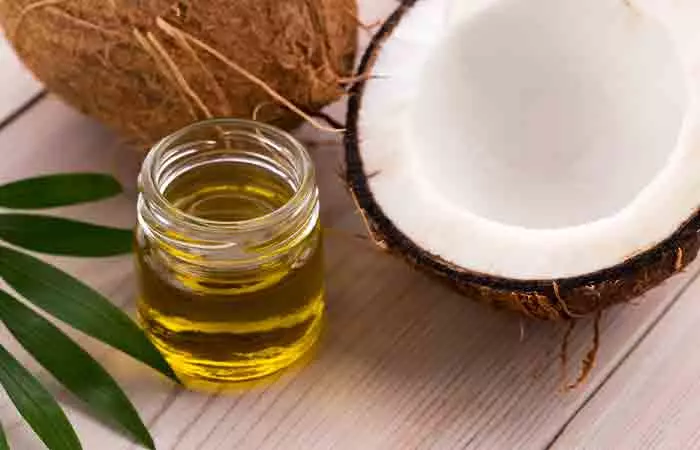
Coconut oil is used in folk remedies to treat issues like bronchitis, cold, cough, flu, and sore throat (12). It has antiviral properties that can help kill or inactivate infection-causing microorganisms in the body.
A study showed that an aerosol spray containing a mixture of natural oils, including coconut oil, decreased inflammation in the upper respiratory tract (13). This can be attributed to the antioxidant and anti-inflammatory properties of coconut oil (14).
You Will Need
1-2 teaspoons of coconut oil
What You Have To Do
Consume coconut oil every morning on an empty stomach.
How Often You Should Do This
Do this once daily.
6. Garlic
Garlic contains a compound called allicin that exhibits antimicrobial properties (15). It is also widely used as a natural treatment for relieving symptoms of cough and cold (16). As we are aware, cold and cough are often the common reasons for an individual to develop postnasal drip.
You Will Need
- 3-4 garlic cloves
- Honey (optional)
What You Have To Do
- Crush the garlic cloves and extract the juice.
- Add some honey to this garlic extract and consume daily.
How Often You Should Do This
Do this 3 times daily.
7. Turmeric
The curcumin in turmeric has antibacterial, antiviral, and anti-inflammatory properties that can help treat flu (or influenza) (17). It also helps in the control of respiratory system-related complications (18). Turmeric is considered to be a natural decongestant and is widely used for treating cough and cold (19).
You Will Need
- 1 teaspoon of turmeric
- 1 glass of hot milk
What You Have To Do
- Mix turmeric in a glass of hot milk.
- Consume the turmeric milk.
How Often You Should Do This
Drink this once daily.
8. Grapefruit Seed Extract
Grapefruit seed extract has antimicrobial and anti-inflammatory properties (20), (21). hence, it can be an effective remedy to fight infections and inflammation related to postnasal drip.
You Will Need
200 mg of grapefruit seed extract supplement
What You Have To Do
Consume grapefruit seed extract.
How Often You Should Do This
Do this 2 times daily.
9. Oil Pulling
Oil pulling is a detoxifying treatment that can help in decongesting your throat (22), (23). The antimicrobial and anti-inflammatory properties of the oil that you use for swishing can help treat your postnasal drip naturally.
You Will Need
- 1 tablespoon of coconut or olive or sesame oil
- 3% hydrogen peroxide
What You Have To Do
- Swish a tablespoon of the oil in your mouth for 10 to 15 minutes on an empty stomach.
- Spit it out and rinse your mouth.
- You can also add a few drops of 3% hydrogen peroxide to the oil.
How Often You Should Do This
Do this once daily.
10. Vitamins And Minerals
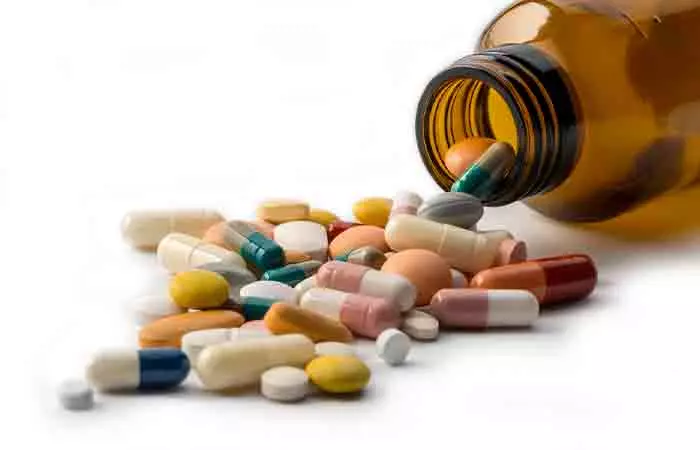
Vitamins C and D are known for their antibacterial properties, which makes them a great option for the treatment of postnasal drip. Zinc has also been found to help relieve cold more efficiently and faster (24). Hence, it recommended increasing your intake of these vitamins via your diet or supplements to combat the condition. However, always consult a healthcare professional before starting new supplements to ensure they are appropriate for your individual needs and don’t contradict any medicine that you might be taking.
11. Vicks VapoRub
Vicks Vapor Rub contains a few extremely beneficial ingredients like menthol and eucalyptus oil that can provide relief from the symptoms of cold and aid restful sleep (25).
You Will Need
Vicks VapoRub
What You Have To Do
Rub a generous amount of Vicks VapoRub on your chest, back, and throat for immediate relief.
How Often You Should Do This
You can do this 2 times daily.
12. Salt Water Gargle
The antimicrobial properties of salt and hot water can help in treating cold and flu (26), (27). Hence, it can help address the underlying infection causing the postnasal drip.
You Will Need
- 1 teaspoon of salt
- 1 glass of medium hot water
What You Have To Do
- Add salt to a glass of hot water.
- Use this water for gargling.
How Often You Should Do This
Do this 3 to 4 times daily.
13. Green Tea
Green tea contains natural antioxidants called catechins that exhibit antimicrobial properties and anti-inflammatory properties (28), (29). Thus, green tea can help fight infections and reduce inflammation in the nasal passages that often accompanies postnasal drip.
You Will Need
- 1 teaspoon of green tea leaves
- 1 cup of hot water
- Honey (optional)
What You Have To Do
- Steep the green tea leaves in a cup of hot water for 5 to 10 minutes.
- Add honey for flavor and consume it before it turns cold.
How Often You Should Do This
Drink this tea 2-3 times daily.
14. Lemon Juice
Lemons are rich sources of vitamin C. While vitamin C does not decrease the incidence of the common cold, it can shorten its duration (30). This can help reduce the symptoms of postnasal drip.
You Will Need
- 1 tablespoon of lemon juice
- 1 glass of water
- Honey (optional)
What You Have To Do
- Add lemon juice to a glass of water and mix well.
- Add honey for flavor and consume this.
How Often You Should Do This
Do this 3 to 4 times daily.
15. Pineapple Juice
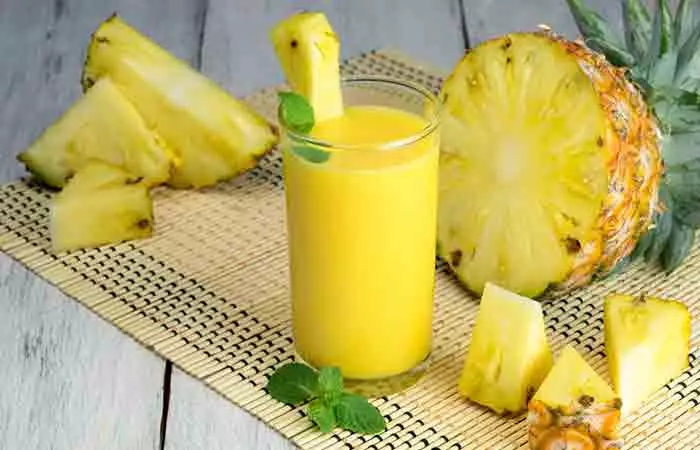
Pineapple contains an enzyme called bromelain that exhibits anti-inflammatory and antibacterial properties (31). Hence, it is often used as a potent expectorant to decongest the phlegm and treat postnasal drip.
You Will Need
- 1 cup of cut pineapples
- 1 cup of water
What You Have To Do
- Blend the pineapples with water.
- Drink this juice.
How Often You Should Do This
Do this at least once daily.
16. Aloe Vera Juice
Aloe vera extract was found to exhibit antiviral activity against influenza (flu) virus (32). It also has anti-inflammatory properties (33). Both these properties can help reduce the symptoms of postnasal drip.
You Will Need
1/4 to 1/2 cup of aloe vera juice
What You Have To Do
Consume aloe vera juice daily.
How Often You Should Do This
Do this once daily.
17. Orange Juice
Orange juice is a rich source of vitamin C (34). As we are aware, vitamin C can enhance immunity and shorten the duration of the infection. This, in turn, can help reduce postnasal drip.
You Will Need
1-2 oranges
What You Have To Do
- Squeeze the juice from the oranges.
- Consume this daily.
How Often You Should Do This
Drink this juice at least 2 to 3 times daily.
Using these remedies as described above can help you get rid of postnasal drip at a faster pace or maybe stop post-nasal drip immediately.
Besides these remedies, there are also medical treatments that you can try. In our next section, we will discuss some standard treatments for postnasal drip.
Medical Treatments For Postnasal Drip
There are several medical treatments available for postnasal drip, depending on its cause. Antihistamines can help if allergies are the trigger, while decongestants may reduce mucus production and ease symptoms from colds or sinus infections. In some cases, nasal sprays or saline rinses can provide relief by clearing out mucus. If a bacterial infection is involved, your doctor may prescribe antibiotics. It is always best to consult a healthcare professional to determine the right treatment for your specific situation.
You can also adopt a few lifestyle changes and precautions to prevent this condition from recurring.
Preventive Tips
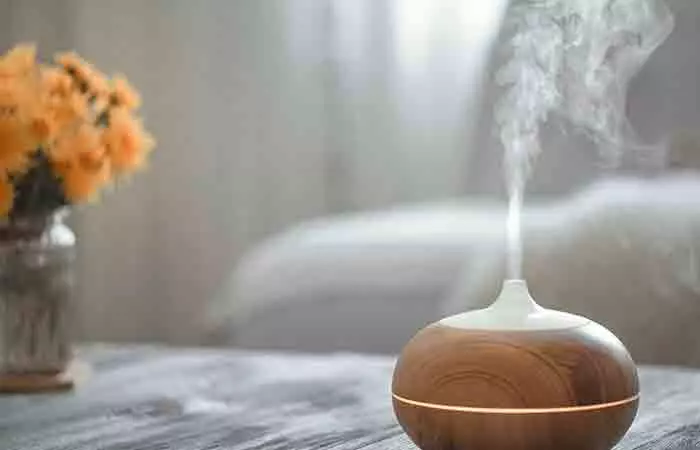
- Use a humidifier or vaporizer to increase the humidity inside your home.
- Include the following yoga asanas in your weekly routine:
- Balasana (Child’s Pose)
- Adho Mukha Svanasana (Downward Facing Dog Pose)
- Uttanasana (Standing Forward Bend)
- Sasangasana (Rabbit Pose)
- Avoid intake of dairy products, such as milk, cheese, and ice creams, as these can worsen your condition. Instead, opt for a diet rich in fruits, vegetables, grains, and low-fat meats.
- Avoid fried and overly processed foods rich in sodium and refined carbs that may trigger mucus buildup (35).
- Incorporate anti-inflammatory foods like ginger, turmeric, and garlic into your diet (36).
- Get proper hydration to thin mucus and keep nasal passages moist (37).
- Avoid caffeinated drinks. You may instead have warm beverages like ginger or peppermint tea.
- Quit smoking.
- Stay clear of allergens, such as dust and pollen, that can trigger postnasal drip. In addition, avoid exposure to smoke and strong odors that may irritate nasal passages.
- Sleep with your head elevated to prevent mucus buildup in the throat.
- Gargle with warm salt water to ease throat irritation and clear mucus.
 Quick Tip
Quick TipWhen To See The Doctor
Along with these home remedies, you may use a sinus flush to clear out the mucus from your nasal passage for added relief. If your symptoms last for more than 10 days, or if you have a fever, wheezing, and smelly drainage, consult a doctor immediately. If the medications fail to relieve the symptoms, you may be asked to undergo a CT scan or other tests.
Infographic: Natural Home Remedies For Postnasal Drip
Isn’t it wonderful that the solution to a runny nose is so easily available right in our kitchen? As per anecdotal evidence, all the remedies mentioned above are efficient in providing relief from it. However, if you prefer only natural remedies, we have summarized those in an infographic below. Take a look!

Illustration: StyleCraze Design Team
Upper airway cough syndrome, or more commonly, postnasal drip, is a condition in which there is excess mucus production in the nasal passage. Infections, allergies, climatic changes, structural irregularities, spicy foods, and certain medications are some of the common causes of postnasal drip. This condition can make coughs worse at night, trigger nausea, throat soreness, and bad breath, so you may want to use home remedies to stop postnasal drip. Garlic, essential oils, turmeric, pineapple juice, apple cider vinegar, ginger tea, oil pulling, and steam inhalation are some effective ways to get relief. Additionally, you can try nasal irrigation to clear the mucus using saline solutions. If the remedies don’t help or you experience severe symptoms, please consult your healthcare provider.
Frequently Asked Questions
What can I take for post-nasal drip during pregnancy?
Ginger is one of the best natural remedies that can offer relief from a postnasal drip in pregnant women. You may increase the intake of ginger through your diet or consume the juice extracted from ginger at regular intervals. Alternatively, a saline rinse using a neti pot or saline sprays can also help in alleviating the symptoms of postnasal drip in pregnant women.
How long does postnasal drip last?
Postnasal drip is often a symptom of an underlying infection like a cold or flu, and it usually lasts for about a week.
What tea is good for postnasal drip?
Herbal teas that can soothe a sore throat are the best. Ginger and thyme teas possess antibacterial and antiviral properties and have a cooling therapeutic effect on your throat. They may also help control mucus overproduction.
What is the best sleeping position for postnasal drip?
Making some changes in your sleeping posture can help you deal with postnasal drip better. Propping up your head with multiple pillows while sleeping will prevent the mucus from draining down your throat. If you sleep on your stomach, putting a pillow beneath your abdomen will align your neck better and prevent post-nasal drip.
What medicine can help dry out a post-nasal drip?
Decongestants (pseudoephedrine) and non-drowsy antihistamines (loratadine-pseudoephedrine) can help dry your post-nasal drip.
What happens if a post-nasal drip is left untreated?
Mild cases usually resolve within a few days. However, in some severe cases, the excess mucus may act as a hotspot for infections and lead to other complications.
Does Benadryl help relieve a post-nasal drip?
Yes. The active agent in Benadryl, diphenhydramine, may help relieve a post-nasal drip.
What’s the best antihistamine for post-nasal drip?
Some antihistamines that may relieve a post-nasal drip include Loratadine (Claritin), Fexofenadine (Allegra), Cetirizine (Zyrtec), or Levocetirizine (Xyzal). Consult your doctor for further medical advice.
Why is a post-nasal drip painful?
A post-nasal drip may irritate your sinuses and lead to a sore throat. It also may cause inflammation in the tissues near the nose and throat and cause pain.
Illustration: Home Remedies To Stop Postnasal Drip
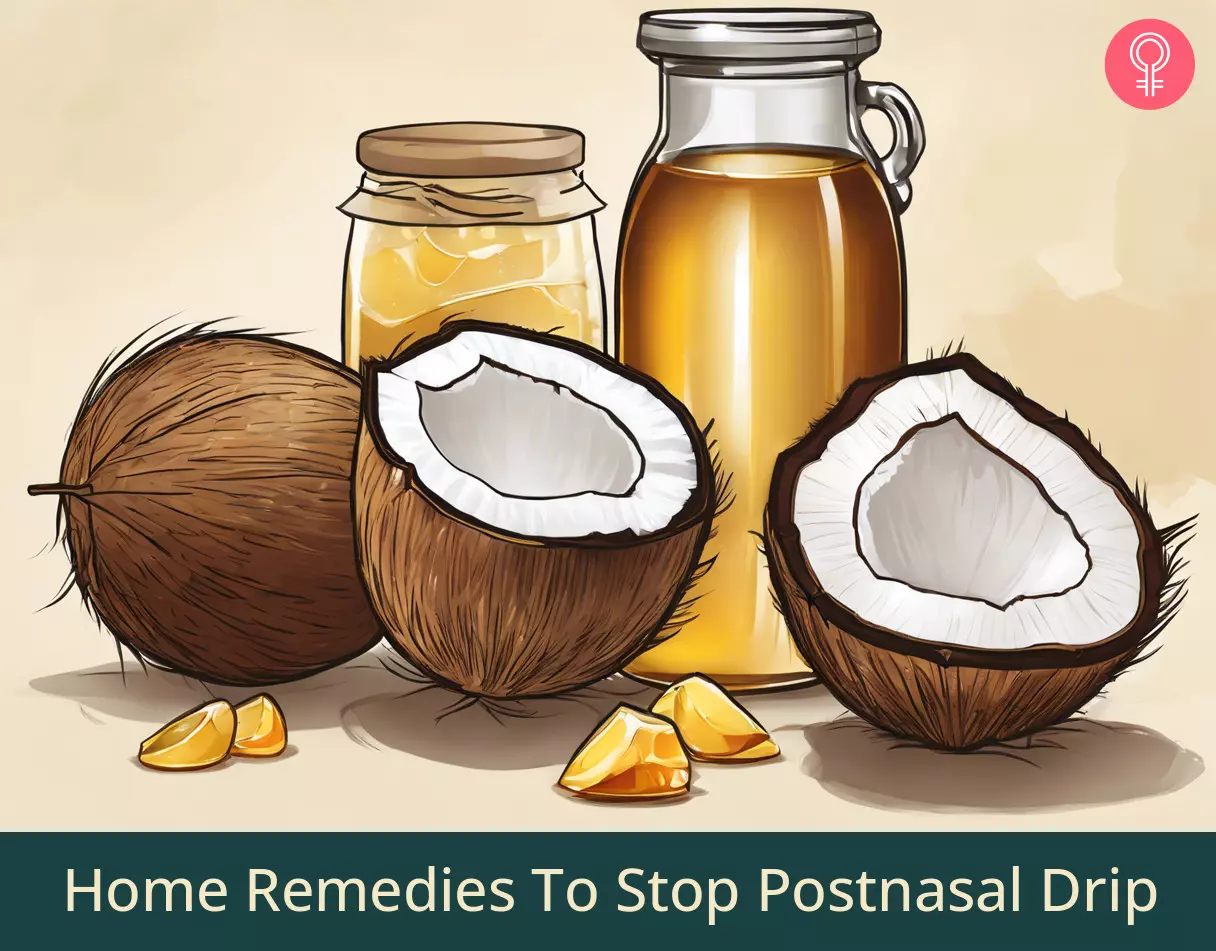
Image: Stable Diffusion/StyleCraze Design Team
Bid farewell to postnasal drip with a collection of effective home remedies. Learn about the causes, symptoms, and discover natural ways to alleviate this bothersome condition in the video below. Watch it now to find relief and reclaim your comfort today!
Personal Experience: Source
StyleCraze's articles are interwoven with authentic personal narratives that provide depth and resonance to our content. Below are the sources of the personal accounts referenced in this article.
i. Home Remedy for Cough and Cold: Inji Kashayam/Ginger Decoction; https://singaporechettinadrecipes.blogspot.com/2013/02/home-remedieskai-vaidhyam.htmlReferences
Articles on StyleCraze are backed by verified information from peer-reviewed and academic research papers, reputed organizations, research institutions, and medical associations to ensure accuracy and relevance. Read our editorial policy to learn more.
- Silva, Gabriela L da et al. “Antioxidant, analgesic and anti-inflammatory effects of lavender essential oil.” Anais da Academia Brasileira de Ciencias vol. 87,2 Suppl (2015): 1397-408.
https://pubmed.ncbi.nlm.nih.gov/26247152// - Cavanagh, H. M. A., and J. M. Wilkinson. “Biological activities of lavender essential oil.” Phytotherapy research 16.4 (2002): 301-308.
https://onlinelibrary.wiley.com/doi/abs/10.1002/ptr.1103 - Sun, Zhenliang et al. “Chemical Composition and Anti-Inflammatory, Cytotoxic and Antioxidant Activities of Essential Oil from Leaves of Mentha piperita Grown in China.” PloS one vol. 9,12 e114767.
https://www.ncbi.nlm.nih.gov/pmc/articles/PMC4262447/ - Pattnaik, S et al. “Antibacterial and antifungal activity of ten essential oils in vitro.” Microbios vol. 86,349 (1996): 237-46.
https://pubmed.ncbi.nlm.nih.gov/8893526// - Lombrea Adelina et al. “A Recent Insight Regarding the Phytochemistry and Bioactivity of Origanum vulgare L. Essential Oil.” International journal of molecular sciences vol. 2124 9653. 17 Dec. 2020 doi:10.3390/ijms21249653
https://www.ncbi.nlm.nih.gov/pmc/articles/PMC7765853/ - Béjaoui Afef et al. “Essential oil composition and antibacterial activity of Origanum vulgare subsp. glandulosum Desf. at different phenological stages.” Journal of medicinal food vol. 1612 (2013): 1115-20. doi:10.1089/jmf.2013.0079
https://www.ncbi.nlm.nih.gov/pmc/articles/PMC3868303/ - Owoyele, Bamidele Victor et al. “Analgesic and anti-inflammatory effects of honey: the involvement of autonomic receptors.” Metabolic brain disease vol. 29,1 (2014): 167-73.
https://pubmed.ncbi.nlm.nih.gov/24318481/ - Goldman, Ran D. “Honey for treatment of cough in children.” Canadian family physician Medecin de famille canadien vol. 60,12 (2014): 1107-8, 1110.
https://www.ncbi.nlm.nih.gov/pmc/articles/PMC4264806/ - Bode AM, Dong Z. The Amazing and Mighty Ginger. In: Benzie IFF, Wachtel-Galor S, editors. Herbal Medicine: Biomolecular and Clinical Aspects. 2nd edition. Boca Raton (FL): CRC Press/Taylor & Francis; 2011. Chapter 7.
https://www.ncbi.nlm.nih.gov/books/NBK92775/ - Qidwai, Waris et al. “Use of folk remedies among patients in Karachi Pakistan.” Journal of Ayub Medical College, Abbottabad : JAMC vol. 15,2 (2003): 31-3.
https://pubmed.ncbi.nlm.nih.gov/14552245/ - Mao, Qian-Qian et al. “Bioactive Compounds and Bioactivities of Ginger (Zingiber officinale Roscoe).” Foods (Basel, Switzerland) vol. 8,6 185. 30 May. 2019.
https://www.ncbi.nlm.nih.gov/pmc/articles/PMC6616534/ - Arora, Rajesh et al. “Potential of Complementary and Alternative Medicine in Preventive Management of Novel H1N1 Flu (Swine Flu) Pandemic: Thwarting Potential Disasters in the Bud.” Evidence-based complementary and alternative medicine : eCAM vol. 2011 (2011): 586506.
https://www.ncbi.nlm.nih.gov/pmc/articles/PMC2957173/ - Gao, Meixia et al. “Antioxidant components of naturally-occurring oils exhibit marked anti-inflammatory activity in epithelial cells of the human upper respiratory system.” Respiratory research vol. 12,1 92. 13 Jul. 2011.
https://www.ncbi.nlm.nih.gov/pmc/articles/PMC3154159/ - Lima, E B C et al. “Cocos nucifera (L.) (Arecaceae): A phytochemical and pharmacological review.” Brazilian journal of medical and biological research = Revista brasileira de pesquisas medicas e biologicas vol. 48,11 (2015): 953-64.
https://www.ncbi.nlm.nih.gov/pmc/articles/PMC4671521/ - Ankri, S, and D Mirelman. “Antimicrobial properties of allicin from garlic.” Microbes and infection vol. 1,2 (1999): 125-9.
https://pubmed.ncbi.nlm.nih.gov/10594976/ - Bayan, Leyla et al. “Garlic: a review of potential therapeutic effects.” Avicenna journal of phytomedicine vol. 4,1 (2014): 1-14.
https://www.ncbi.nlm.nih.gov/pmc/articles/PMC4103721/ - Moghadamtousi, Soheil Zorofchian et al. “A review on antibacterial, antiviral, and antifungal activity of curcumin.” BioMed research international vol. 2014 (2014): 186864.
https://www.ncbi.nlm.nih.gov/pmc/articles/PMC4022204/ - Rahmani, Arshad Husain et al. “Role of Curcumin in Disease Prevention and Treatment.” Advanced biomedical research vol. 7 38. 28 Feb. 2018.
https://www.ncbi.nlm.nih.gov/pmc/articles/PMC5852989/ - Prasad S, Aggarwal BB. Turmeric, the Golden Spice: From Traditional Medicine to Modern Medicine. In: Benzie IFF, Wachtel-Galor S, editors. Herbal Medicine: Biomolecular and Clinical Aspects. 2nd edition. Boca Raton (FL): CRC Press/Taylor & Francis; 2011. Chapter 13.
https://www.ncbi.nlm.nih.gov/books/NBK92752/ - Heggers, John P et al. “The effectiveness of processed grapefruit-seed extract as an antibacterial agent: II. Mechanism of action and in vitro toxicity.” Journal of alternative and complementary medicine (New York, N.Y.) vol. 8,3 (2002): 333-40.
https://pubmed.ncbi.nlm.nih.gov/12165191// - Su, Xiaowei, and Doris H D’Souza. “Grape seed extract for control of human enteric viruses.” Applied and environmental microbiology vol. 77,12 (2011): 3982-7.
https://www.ncbi.nlm.nih.gov/pmc/articles/PMC3131668/ - Shanbhag, Vagish Kumar L. “Oil pulling for maintaining oral hygiene – A review.” Journal of traditional and complementary medicine vol. 7,1 106-109. 6 Jun. 2016.
https://www.ncbi.nlm.nih.gov/pmc/articles/PMC5198813/ - Naseem, Mustafa et al. “Oil pulling and importance of traditional medicine in oral health maintenance.” International journal of health sciences vol. 11,4 (2017): 65-70.
https://www.ncbi.nlm.nih.gov/pmc/articles/PMC5654187/ - Rondanelli, Mariangela et al. “Self-Care for Common Colds: The Pivotal Role of Vitamin D, Vitamin C, Zinc, and Echinacea in Three Main Immune Interactive Clusters (Physical Barriers, Innate and Adaptive Immunity) Involved during an Episode of Common Colds-Practical Advice on Dosages and on the Time to Take These Nutrients/Botanicals in order to Prevent or Treat Common Colds.” Evidence-based complementary and alternative medicine : eCAM vol. 2018 5813095.
https://www.ncbi.nlm.nih.gov/pmc/articles/PMC5949172/ - Paul, Ian M et al. “Vapor rub, petrolatum, and no treatment for children with nocturnal cough and cold symptoms.” Pediatrics vol. 126,6 (2010): 1092-9.
https://www.ncbi.nlm.nih.gov/pmc/articles/PMC3600823/ - Moyad, Mark A. “Conventional and alternative medical advice for cold and flu prevention: what should be recommended and what should be avoided?.” Urologic nursing vol. 29,6 (2009): 455-8.
https://pubmed.ncbi.nlm.nih.gov/20088240/ - Wijnker, J J et al. “Antimicrobial properties of salt (NaCl) used for the preservation of natural casings.” Food microbiology vol. 23,7 (2006): 657-62.
https://pubmed.ncbi.nlm.nih.gov/16943065/ - Chatterjee, Priyanka et al. “Evaluation of anti-inflammatory effects of green tea and black tea: A comparative in vitro study.” Journal of advanced pharmaceutical technology & research vol. 3,2 (2012): 136-8.
https://www.ncbi.nlm.nih.gov/pmc/articles/PMC3401676/ - Taylor, Peter W et al. “Antimicrobial properties of green tea catechins.” Food science and technology bulletin vol. 2 (2005): 71-81.
https://www.ncbi.nlm.nih.gov/pmc/articles/PMC2763290/ - Hemilä, Harri. “Vitamin C and Infections.” Nutrients vol. 9,4 339. 29 Mar. 2017.
https://pubmed.ncbi.nlm.nih.gov/28353648// - Rathnavelu, Vidhya et al. “Potential role of bromelain in clinical and therapeutic applications.” Biomedical reports vol. 5,3 (2016): 283-288.
https://www.ncbi.nlm.nih.gov/pmc/articles/PMC4998156/ - Choi, Jang-Gi et al. “Aloe vera and its Components Inhibit Influenza A Virus-Induced Autophagy and Replication.” The American journal of Chinese medicine vol. 47,6 (2019): 1307-1324.
https://pubmed.ncbi.nlm.nih.gov/31505936// - Surjushe, Amar et al. “Aloe vera: a short review.” Indian journal of dermatology vol. 53,4 (2008): 163-6.
https://www.ncbi.nlm.nih.gov/pmc/articles/PMC2763764/ - Sánchez-Moreno, Concepción et al. “Effect of orange juice intake on vitamin C concentrations and biomarkers of antioxidant status in humans.” The American journal of clinical nutrition vol. 78,3 (2003): 454-60.
https://pubmed.ncbi.nlm.nih.gov/12936929// - Lesley M Butler et al. ”Prospective Study of Dietary Patterns and Persistent Cough with Phlegm among Chinese Singaporeans” Am J Respir Crit Care Med. 2005 Oct 20;173(3):264–270.
https://pmc.ncbi.nlm.nih.gov/articles/PMC1447591/ - Christiana Oluwatoyin Ajanaku et al. ”Functional bioactive compounds in ginger turmeric and garlic” Front Nutr. 2022 Dec 8;9:1012023.
https://pmc.ncbi.nlm.nih.gov/articles/PMC9773837/ - Wayne H Anderson et al. “The Relationship of Mucus Concentration (Hydration) to Mucus Osmotic Pressure and Transport in Chronic Bronchitis” Am J Respir Crit Care Med. 2015 Jul 15;192(2):182–190.
https://pmc.ncbi.nlm.nih.gov/articles/PMC4532825/
Read full bio of Dr. Zeel Gandhi
Read full bio of Shaheen Naser
Read full bio of Arshiya Syeda
Read full bio of Dipti Sharma






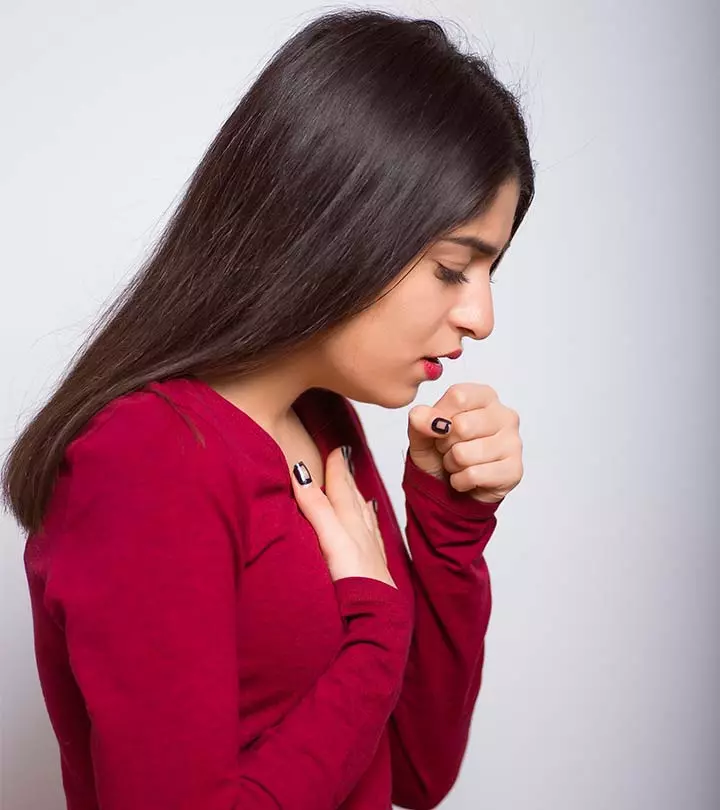
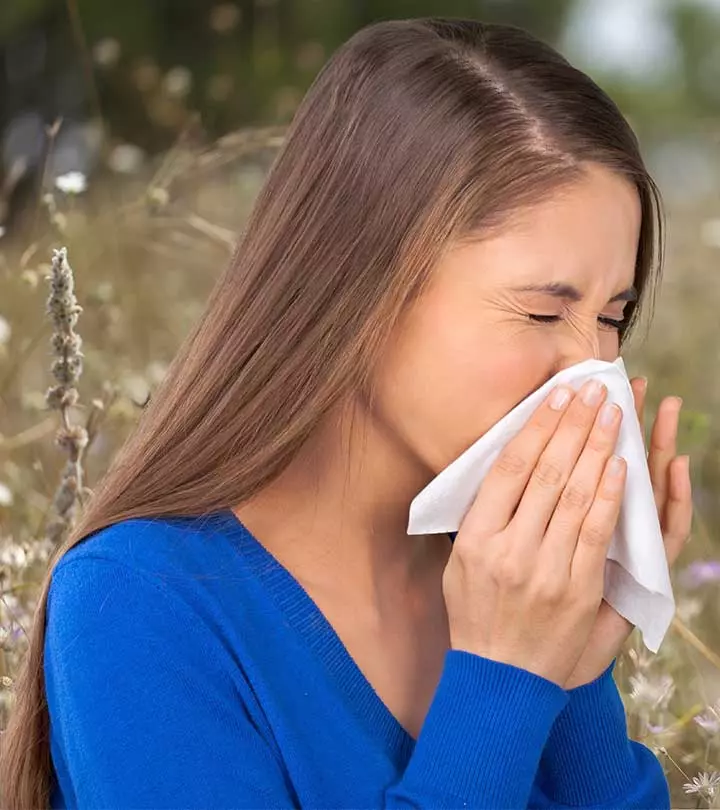
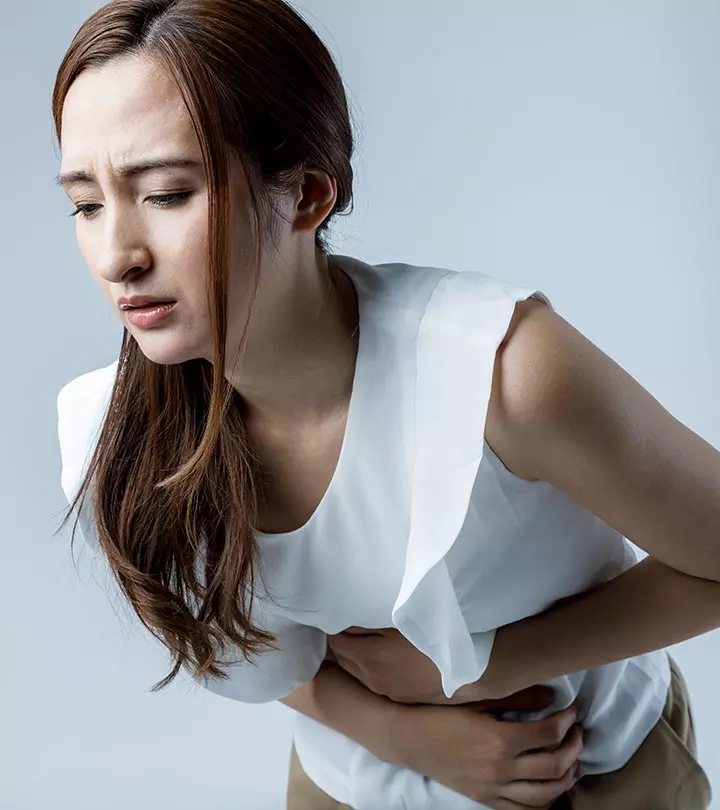

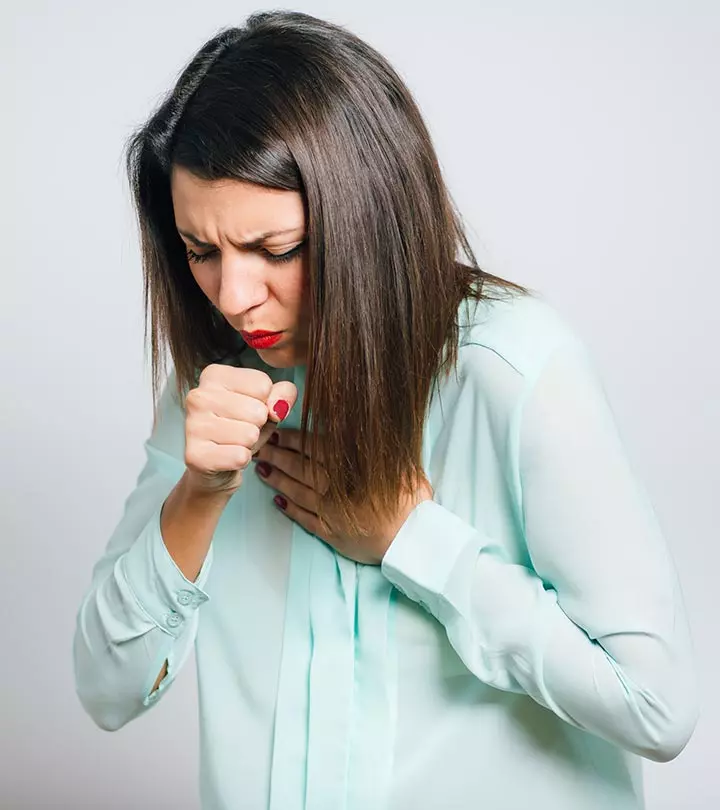
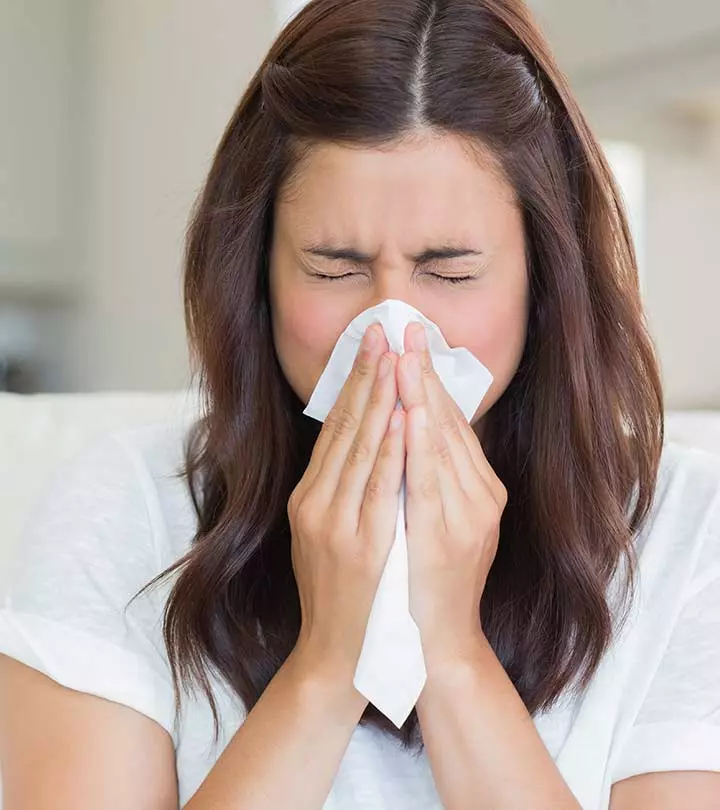
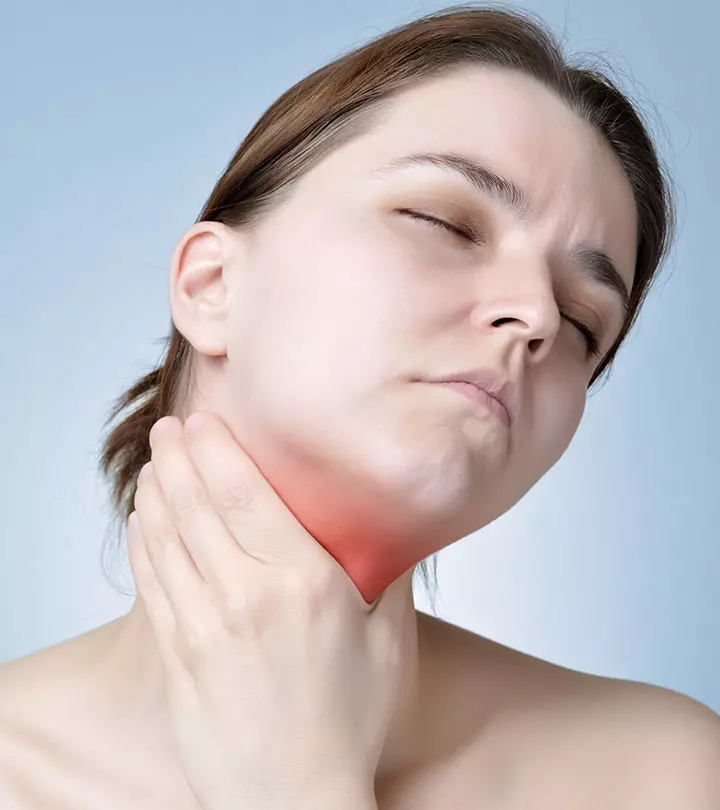
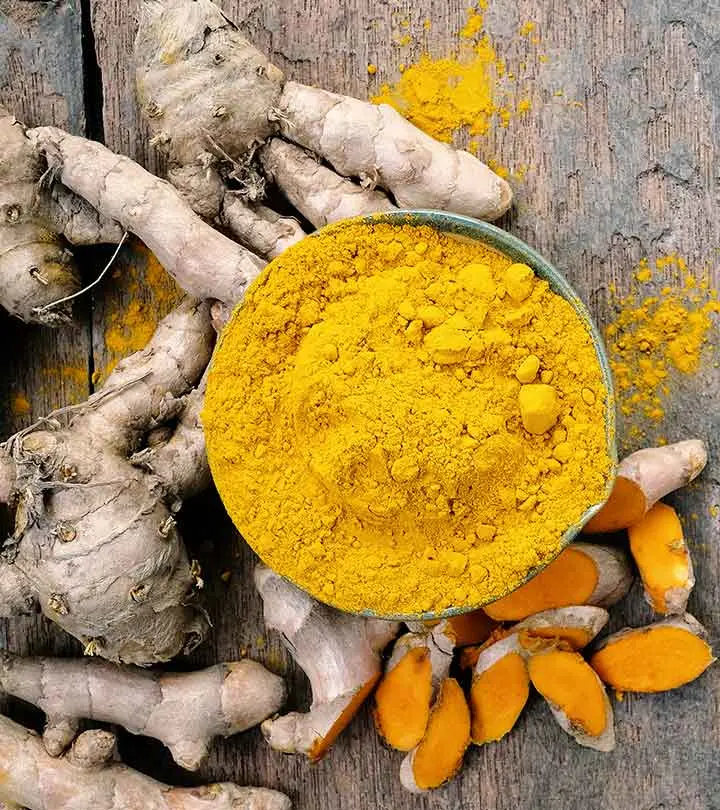
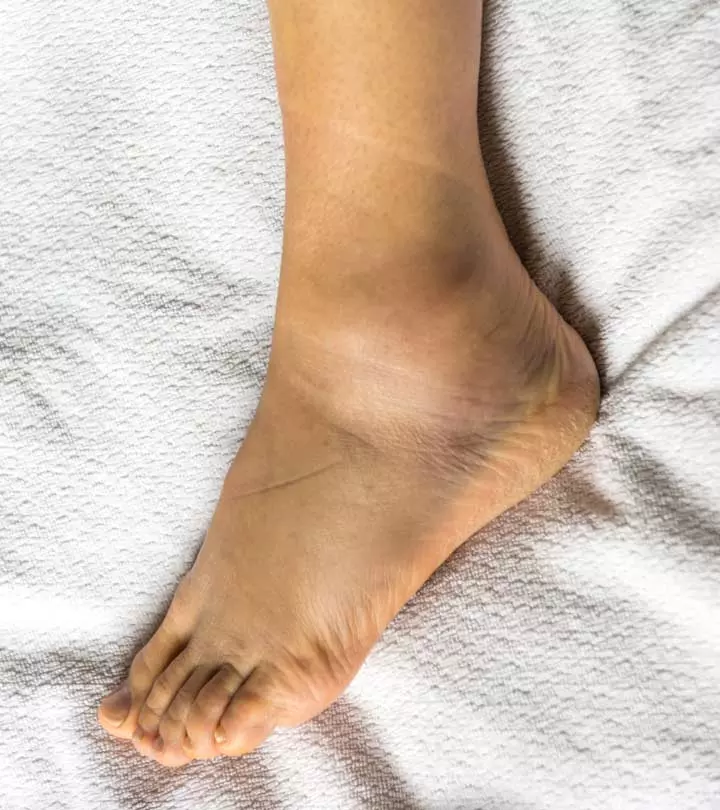

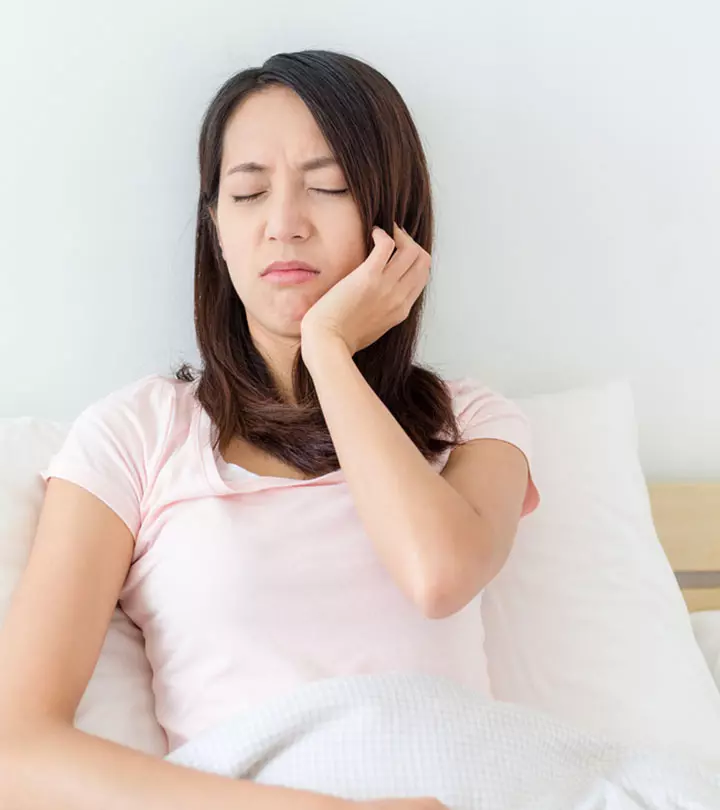


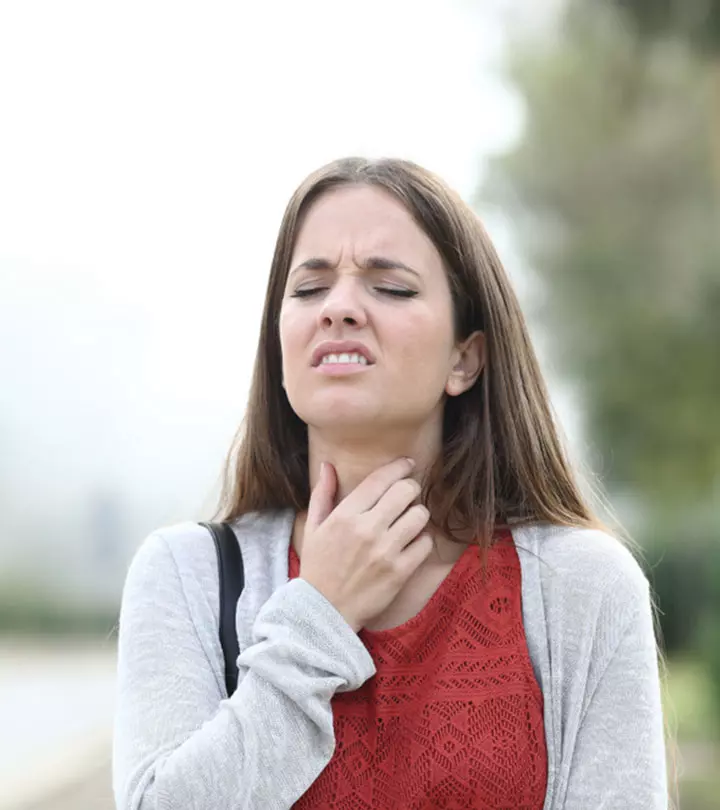
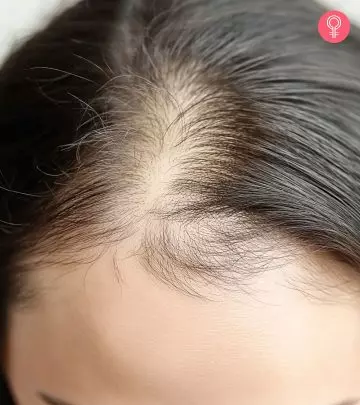
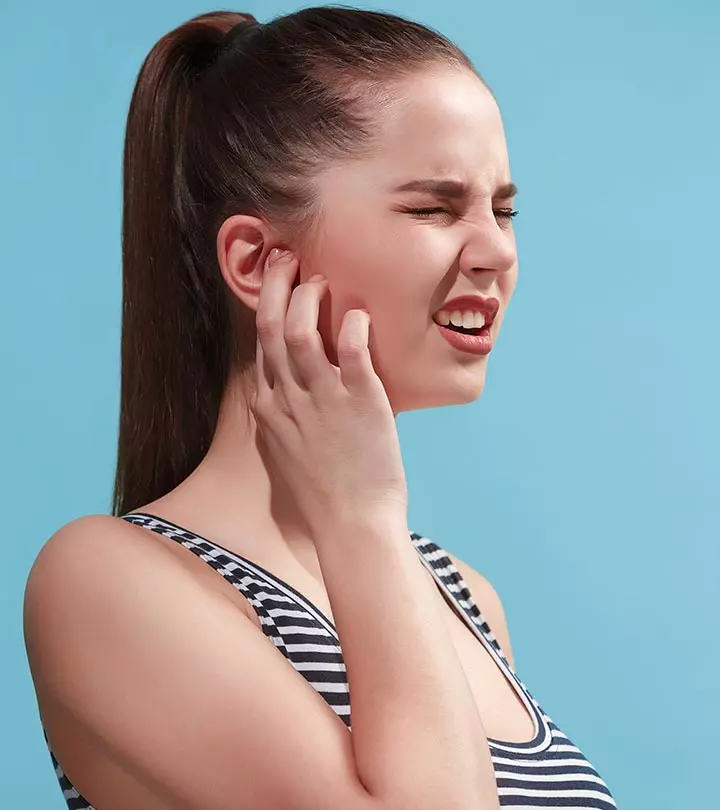


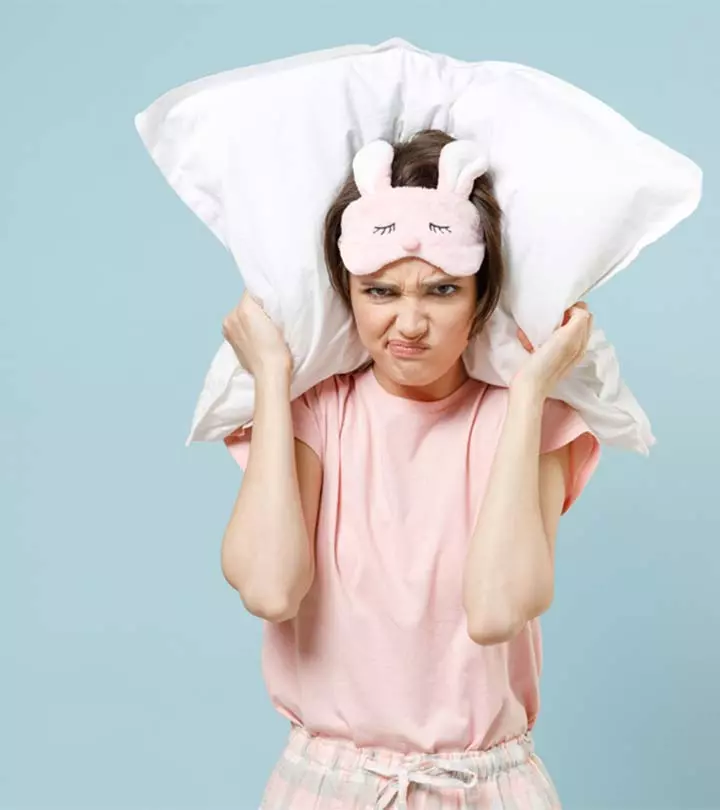


Community Experiences
Join the conversation and become a part of our empowering community! Share your stories, experiences, and insights to connect with other beauty, lifestyle, and health enthusiasts.